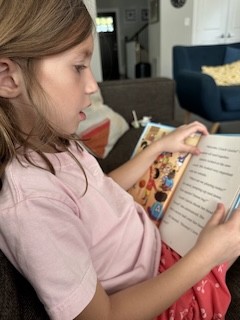It happened again this week.
Awhile back I was a member of the National Reading Panel (NRP) that reviewed instructional research on the teaching of reading at the request of the U.S. Congress. One of my roles was to serve on the “alphabetics committee” that reviewed the research on phonemic awareness and phonics instruction.
Since then it has happened numerous times, like it did this week.
Some self-proclaimed phonics authority attributes findings to the NRP that we didn’t actually find (usually because they didn’t actually read it).
The one this week has been one of the more frequent misclaims. He claimed that the NRP found synthetic phonics instruction to be more effective than analytic phonics instruction.
Synthetic phonics instruction focuses on teaching each individual letter sound and having kids try to sound each letter or letter combination (like th, sh) one at a time and then try to blend those back into word pronunciations.
By contrast, analytic approaches focus attention on larger spelling generalizations (like rimes: ab, ad, ag, ack, am, an) and word analogies (if game is pronounced with a long a then came must be pronounced with a long a).
What did the National Reading Panel conclude about synthetic and analytic phonics instruction? That they both conferred a learning advantage on young readers. The average effect size was somewhat higher for synthetic than analytic approaches, but not significantly so (it was so small a difference that one can’t say one is really higher than the other). In other words, synthetic and analytic phonics are equally good.
It is certainly possible that with more studies and with the same pattern of results that we’d eventually conclude that synthetic phonics is best, but that is a surmise, not a research finding.
Why does this equivalence confuse so many phonics proponents?
The NRP concluded that early, explicit, systematic phonics teaching gives kids a learning advantage. Systematic, not synthetic. (Systematic means that the phonics instruction followed a scope-and-sequence, the teacher didn’t just teach phonics as she thought kids might need it.)
Systematic-synthetic, synthetic-systematic… maybe my phonics friends are looking at the first two letters and then guessing the rest of the word… which is not a very good decoding strategy.
Or, they simply believe that synthetic phonics is best and don’t recognize the damage they do by claiming research support for their beliefs.
When I was becoming a teacher—nearly a lifetime ago—my professors emphasized the superiority of analytic phonics (based on logic rather than research). I believed them, but then tried to teach phonics in first-grade.
It worked fine, usually, but there were kids who struggled to use words as analogies and to recognize the larger spelling units. It just seemed too abstract for some of them.
Although I’d been told it was wrong, out of desperation I tried teaching these kids with synthetic phonics… and they were able to get it. For these kids, working with each of the individual letters was simpler to understand and it seemed to me that they were learning to decode better.
Don’t get me wrong. My claim here isn’t that the research findings should be damned and that my experience allows me to conclude synthetic phonics to be superior to analytic phonics.
I don’t go there, because research has also found problems with the blending part of synthetic phonics. It can be tough to keep from adding vowel sounds to individual consonant phonemes. Synthetic phonics works better when it includes explicit teaching in blending, including engaging kids in the kinds of exercises one finds in Words their Way, morphological teaching, or other more analytic approaches.
The take away: Make sure young children receive daily, explicit, systematic decoding instruction.
But don’t be fanatical about synthetic or analytic approaches.
Synthetic phonics can be a bit easier to catch onto, but its effectiveness can be undermined by blending problems (and some of the analytic approaches can help with that).
Analytic phonics is, in my experience—and perhaps in that small effect size difference—harder to learn, but it can avoid some of those blending problems and tends to be more consistent with what kids will need to learn about morphology.
Sometimes the right solution is “and” and it not “either/or.” Adopt a good phonics program, and make sure it works for your students—which might require that you add some synthetic or analytic instruction depending on how they are doing.







Comments
See what others have to say about this topic.